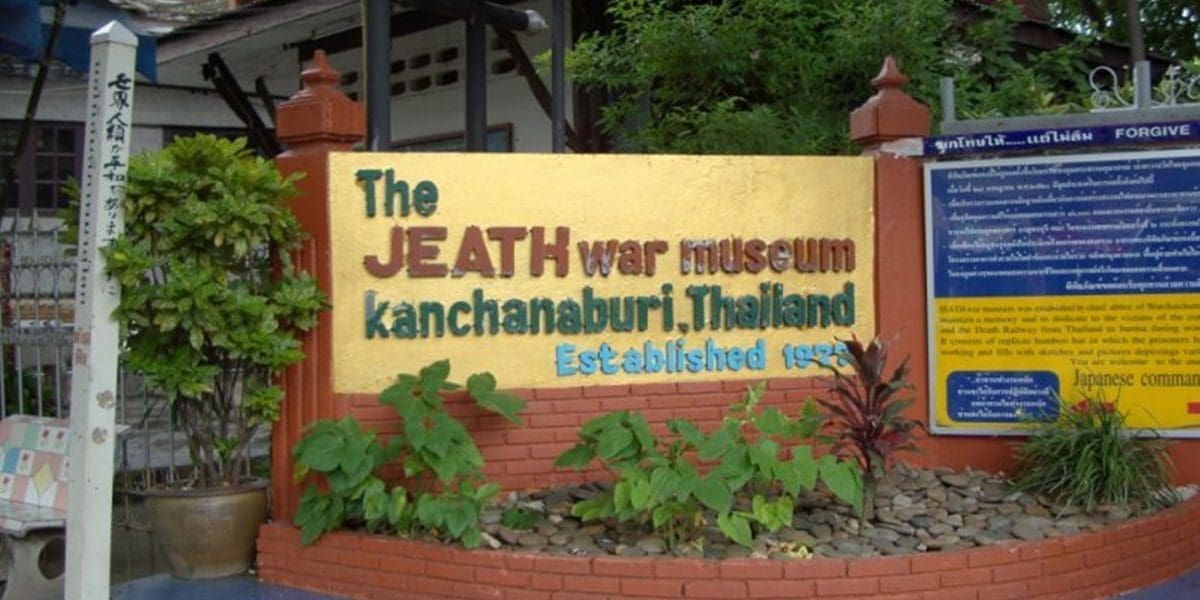A piece of history on the Death Railway and World War II:
The Chief Abbot of Wat Chai Chumphon, the Venerable Phra Theppanyasuthee, founded the JEATH War Museum in 1977. His hope, desire, and intention were to shine a light on the appalling conditions that the WWII prisoners of war (POW) had to endure while building the infamous Death Railway from 1942 to 1943. You’ll find the museum at the junction of the Kwae Yai and Kwae Noi rivers in Kanchanaburi. It also sits within the grounds of the Chai Chumphon temple.
There are two sections in the museum itself:
The first is a replica of the POWs living quarters. There you’ll discover a collection of sketches depicting the arch treatments the prisoners had to endure during the railway construction.
The second has an array of bamboo huts holding pictures, artwork, and correspondence from the POWs. You’ll also see a few other relics from the war, including an unexploded Allied bomb sent to destroy the bridge. You’ll also have the chance to sit through a video presentation in this section of the museum.
The JEATH War Museum is managed and maintained by monks who live and pray at the adjacent Wat Chai Chumphon. The temple holds some fascinating statues and shrines of its own. One of those is a WWII-era boat that the monks dredged out of the river, making it well worth your visit.
The acronym JEATH represents the warring countries that were directly involved in the construction of the Death Railway during those dreadful years. It stands for Japan, England, Australia & America, Thailand, and Holland!


